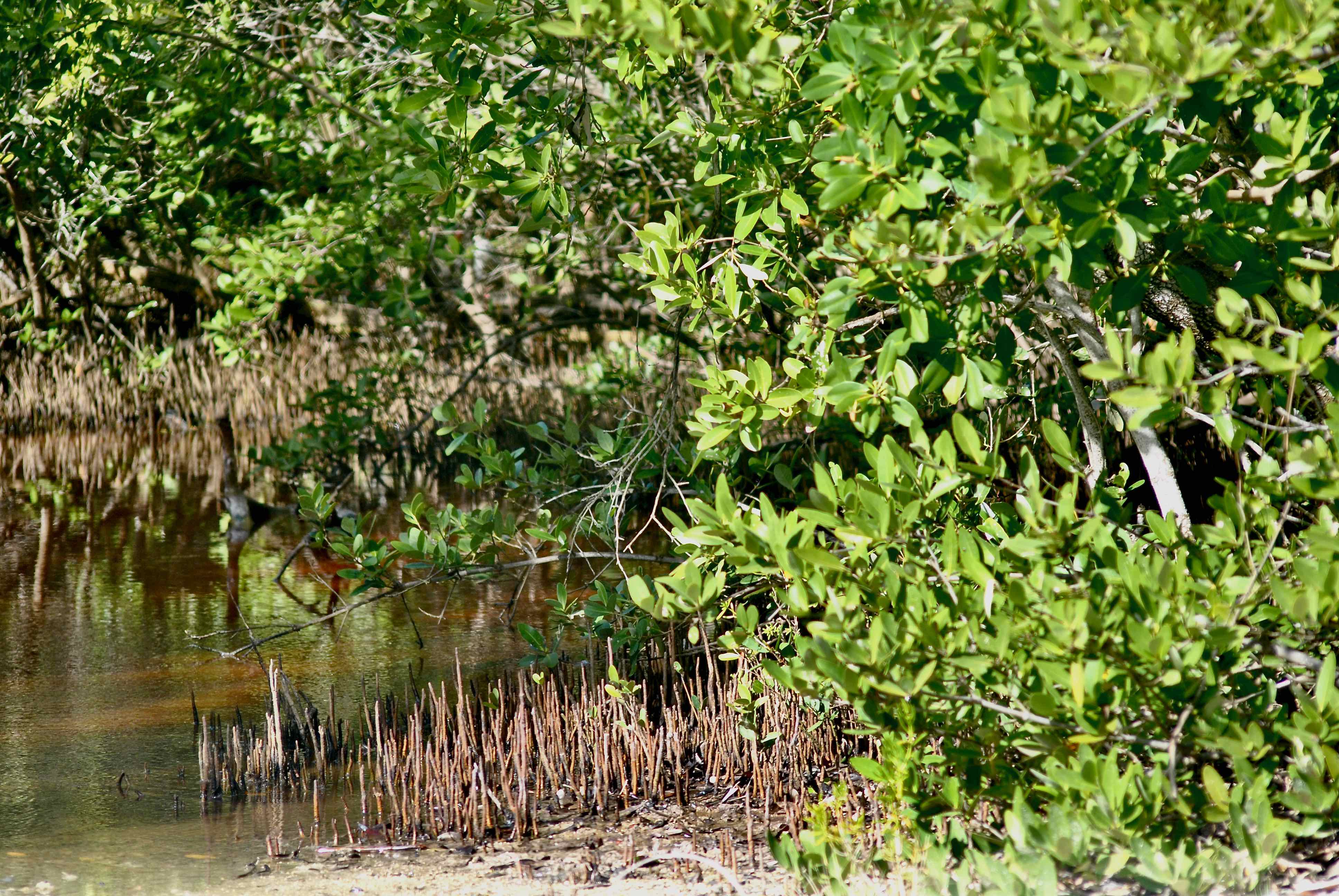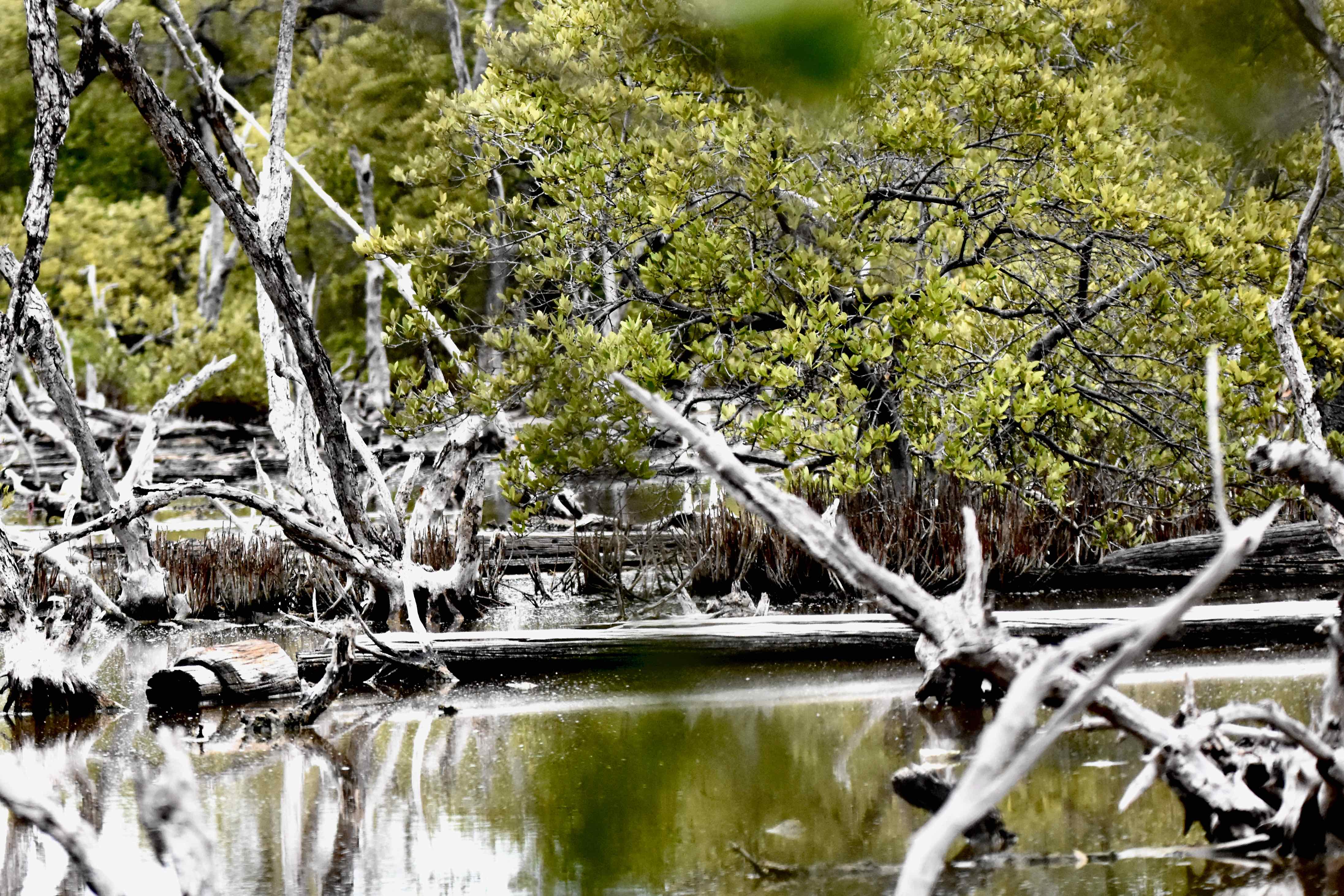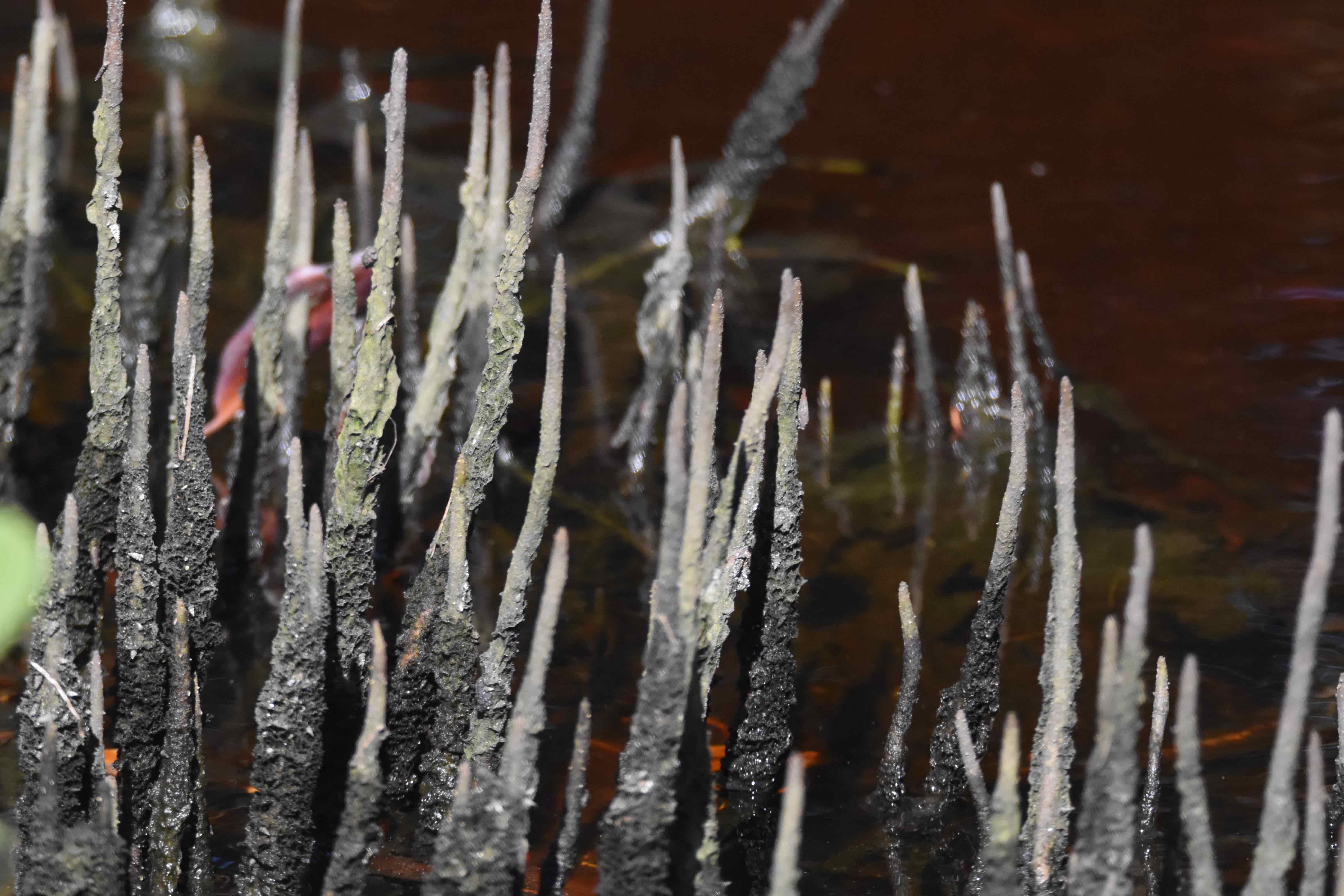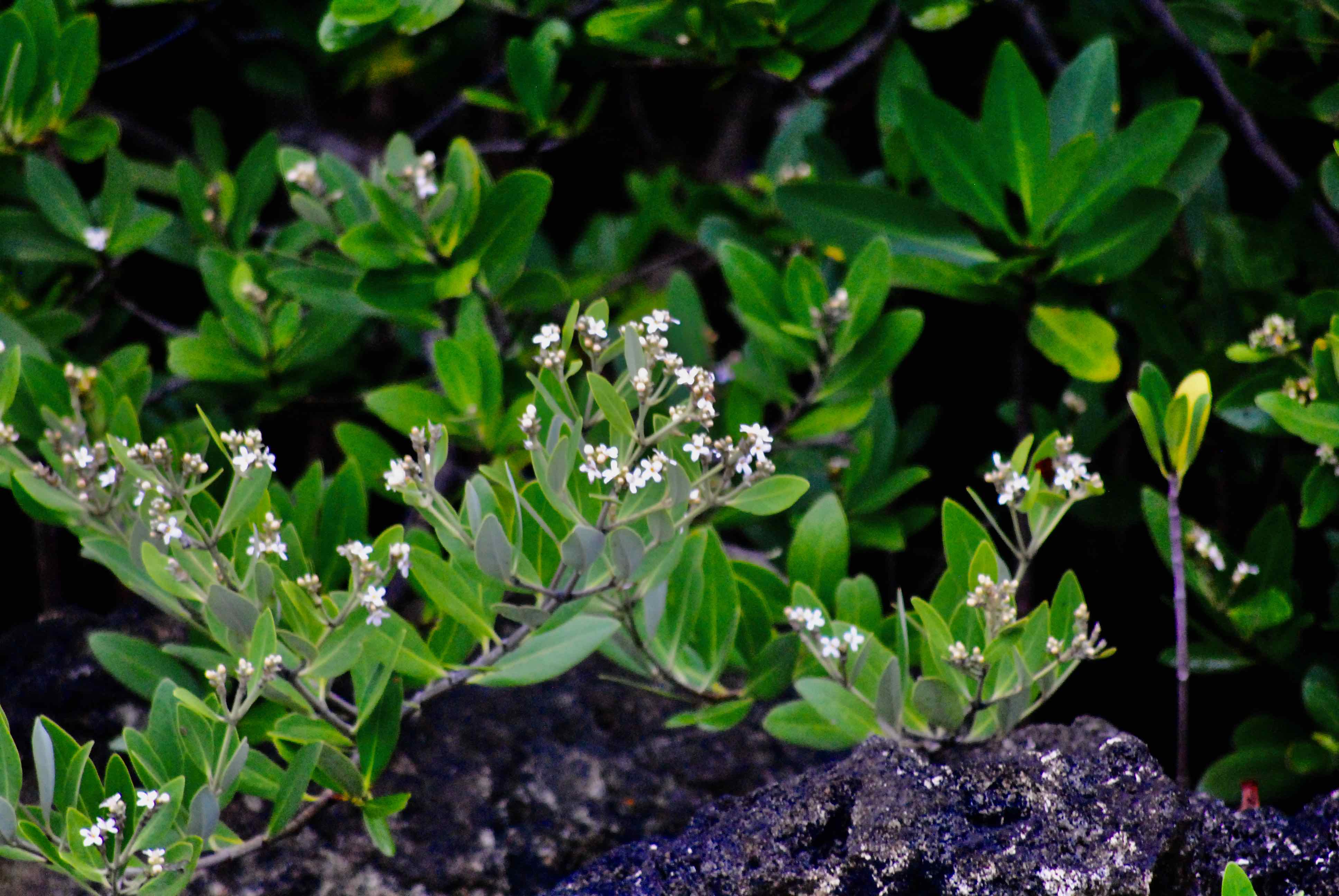
Black mangroves, photographed at National Key Deer Refuge, Big Pine Key, Monroe County, December 2014.
This is the middling mangrove. While the reds take to the water and the whites take to the land, black mangroves, Avicennia germinans, find their home in between. It is one of three mangrove species native to Florida and the United States, and like the other two, plays several critical roles in its preferred habitat, tidal swamps.
Black mangroves can be massive trees 60 feet tall or more, or they can be little shrubs, depending on where they are growing. Typically in South Florida they range between 20 and 40 feet tall. The bark is gray, smooth when young, turning scaly as the tree matures. The flowers are white, with four petals and a golden throat, and they appear year round, attracting bees and butterflies. The leaves excrete salt — lick one and you'll taste it. But the feature that most easily identifies the black mangrove from others is the stick-like roots that protrude from around the base. They're called pneumatophores, and they rise above the high tide mark and help the tree breath. If the pneumatophores are submerged or covered in silt too long, the tree will die. Oil slicks also can damage the trees.
Black mangroves are found in coastal Florida as far north as St. Johns County. Their range extends along the Gulf Coast westward to Texas. They are cold sensitive. Cold will stunt their growth in the northern portions of their range, and a freeze will kill them. However, seedlings will recolonize an area until the next big chill comes along. Black mangroves are also native to the Caribbean, Mexico, Central America, South America and western Africa. Scientists are attempting to develop varieties that are more cold resistant.
Collectively, mangroves play several critical roles. Mangrove forests protect land from the effects of major storms, including hurricanes, by reducing wave energy and limiting erosion.
They also create a sheltered living space for small fish, crabs, shrimp and other organisms, some of which are endangered.
They provide rookeries for pelicans, spoonbills and other birds. Which is why mangroves are now protected in Florida. But back in the day, black mangroves were cut down for a variety of uses. The wood is dark (the inspiration for the name), dense and difficult to work with — it splits easily — but was used for posts, flooring and fishing poles. It was also processed into charcoal. The heat given off by black mangrove wood is especially intense, making it the useful in firing bricks.
The bark has a high tannic acid content and was used to treat leathers. Dyes were made from the bark as well. The leaves provided some native people with salt. The bark also provided medicines used to stop bleeding and remedies for diarrhea.
As we mentioned above, black mangrove flowers are magnets for honey bees, and the quality of black mangrove honey is said to be excellent.
Black mangroves are members of Avicenniaceae, a family of plants named after Avicenna, an Iranian philosopher and doctor of the 11th and 12th centuries. We've seen some who classify it as a member of the verbena family, Verbenaceae.
National Key Deer Refuge



